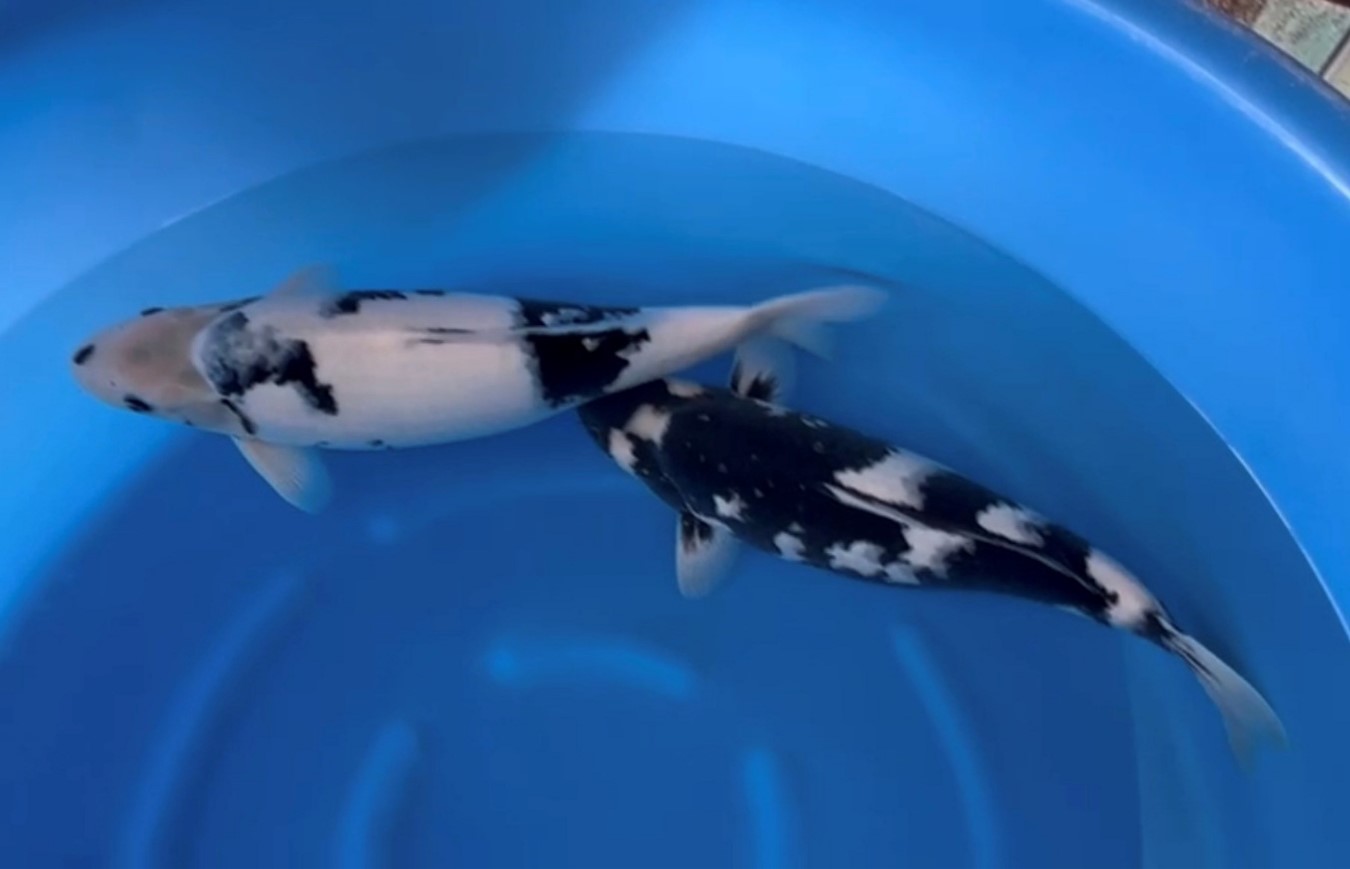Japan Koi Buying Trip - 2023
After a two-year coronavirus hiatus, we had the chance to once again head east to the mountains of Nagaoka, Japan in search of Japanese Koi for the up-and-coming pond season. Our primary goal securing small 7-10cm Tosai (In its first year - up to one year old).

It is worthy of note of just how significant the breeding of koi is in this area of Japan; many people are employed thanks to this practise whether it’s the breeding, the supplies, or the export. Several breeders are generational owners that have inherited their businesses from a relative.
Each breeder had a slightly different mix of koi for us to see as these fish are so young and small the primary points, we were looking for were the vibrancy of the mix and body thickness. It took best part of 5 days to fill our quota of smaller fish.

We are often asked if we can hand-select certain varieties and size of koi when we go on our trips to Japan. This year was no exception. We had several customers looking for various sizes and qualities of koi and this is the process we follow when trying to source these fish.
The first thing we do is to ask our customers if they can supply some images of the koi on their wish list and to give us the size they want and to give us an idea of budget (we can help with this from our previous trips). Armed with this information we leave the UK bound for Japan in the hope of finding the perfect fish!
This time we were tasked with trying to locate high quality Shiro Utsuri around 45-55cm. While we are doing the visits to each breeder in turn we are looking for the fish we need for the stores stock ponds and keeping an eye out for any fish that might fit what our customer was looking for. We visited a small specialist breeder of Shiro Utsuri called Kobayashi, he used to breed his fish with the ‘white tiger’ bloodline but in recent years has favoured the ‘Omasako’ (the most famous Shiro Utsuri breeder) bloodline.

This image is of two very different Shiro Utsuri - in the bowl we have a finished koi and one that is still to develop all its markings. The water in the mud ponds is soft water so the sumi (black colour) will always develop further in the hard water we have in the UK. With the paler fish you can see a light grey tone across its shoulders and a grey edge to the other markings on the fish, these will all develop over time to become the solid black markings and may even increase in size to go down to the nose of the fish. The darker fish still has some grey edging to the markings that will become darker but the fish has already developed most of its finished markings, the motogura (black markings in the pectoral fins) are nice and equal in size and shape making this fish more desirable.
Our criteria for selection of high quality koi is as follows:
- Body shape.
- Skin quality. This is the clarity of the skin which shows the colours and marking off their best.
- Markings or patterns.
- Size for the age of fish.
Generally, we find the paler koi is the better fish as the body shape and skin quality were superb. Once we have made this selection, we photograph the fish and send the photos to the customer for their approval with an approximate retail price. Thankfully this particular customer was very happy with our selection, and we will soon see these fish in our Littlehampton store to settle them in before they go to their new home.
Below is a box we purchased of small fish to compare. We have some darker and lighter ones for our customers to make their own minds up as to how they think the fish will develop.


We had several orders to fulfil this year with some varieties coming up which are very different.
In this box we have two Goshiki (red and grey), two Kogane Ochiba Shigure (silver and gold) and one Kumonryu (black and white).
These fish were from Kawakami who specialises in Goshiki were the grey markings go almost black. With this variety after we have selected for body shape and skin quality it is important to look at the Hi (red) pattern to make sure it is evenly marked throughout the body, the darker pattern will come later. These two fish were also for a customer as they do not yet have this variety in their pond.

From the same farm, we have selected some smaller ones to see how they develop.
If you are looking for that special koi, then you can contact us to look out for it on our next trip.
We visited the Maruhiro Koi Farm – it is run by Hironori Hirasawa in the Ojiya region. Hironori is the son of Seitaro Hirasawa (Marusei Koi Farm) so he has a wealth of knowledge about producing quality koi. The farm is well known and quickly becoming one of the largest in the area. They are known for their varieties of Sanke, Utsurimon, Hikarimono, Kawarigoi. People travel from around the world to visit this farm to see first-hand their famous round pond. This pond is home to over 300 of the best quality, show winning, koi you will ever see. Prices for these fish started at 1million Yen (£6000) therefore there is an estimated starting value of £1.8 million worth of koi.



